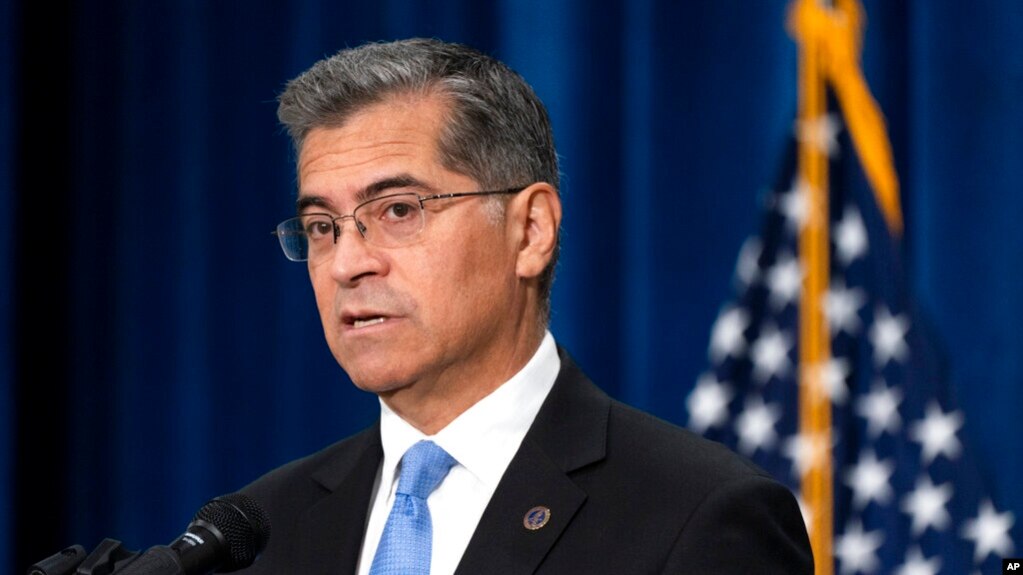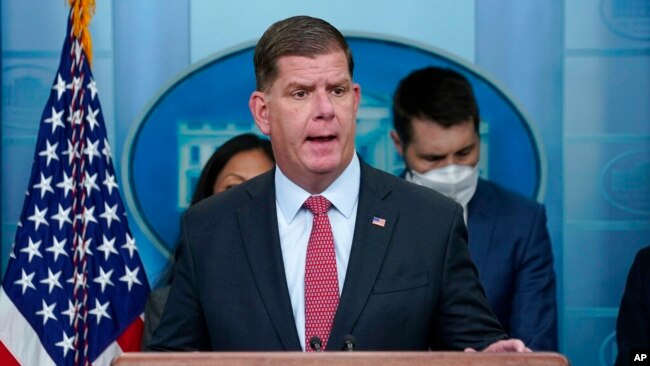Carbon Dioxide Emissions Reached a Record High in 2022
The report was described as disconcerting by climate scientists.

NEW YORK (AP) — Communities around the world emitted more carbon dioxide in 2022 than in any other year on records dating to 1900, a result of air travel rebounding from the pandemic and more cities turning to coal as a low-cost source of power.
Emissions of the climate-warming gas that were caused by energy production grew 0.9% to reach 36.8 gigatons in 2022, the International Energy Agency reported Thursday. (The mass of one gigaton is equivalent to about 10,000 fully loaded aircraft carriers, according to NASA.)
Carbon dioxide is released when fossil fuels such as oil, coal or natural gas are burned to powers cars, planes, homes and factories. When the gas enters the atmosphere, it traps heat and contributes to the warming of the the climate.
Extreme weather events intensified last year's carbon dioxide emissions: Droughts reduced the amount of water available for hydropower, which increased the need to burn fossil fuels. And heat waves drove up demand for electricity.
Thursday's report was described as disconcerting by climate scientists, who warn that energy users around the world must cut emissions dramatically to slow the dire consequences of global warming.
“Any emissions growth — even 1% — is a failure,” said Rob Jackson, a professor of earth system science at Stanford University and chairman of the Global Carbon Project, an international group. "We can’t afford growth. We can’t afford stasis. It’s cuts or chaos for the planet. Any year with higher coal emissions is a bad year for our health and for the Earth.”
Carbon dioxide emissions from coal grew 1.6% last year. Many communities, primarily in Asia, switched from natural gas to coal to avoid high natural gas prices that were worsened by Russia's invasion of Ukraine, the IEA said
And as global airline traffic increased, carbon dioxide emissions from burning oil grew 2.5%, with about half the surge resulting from the aviation sector.
Global emissions have grown in most years since 1900 and have accelerated over time, according to data from IEA. One exception was the pandemic year of 2020, when travel all but came to a standstill.
Last year's level of emissions, though a record high, was nevertheless lower than experts had expected. Increased deployment of renewable energy, electric vehicles and heat pumps together helped prevent an additional 550 megatons of carbon dioxide emissions, the IEA said.
Strict pandemic measures and weak economic growth in China also curtailed production, helping to limit overall global emissions. And in Europe, the IEA said, electricity generation from wind and solar power exceeded that of gas or nuclear for the first time.
"Without clean energy, the growth in CO2 emissions would have been nearly three times as high,” Fatih Birol, the IEA's executive director, said in a statement.
“However, we still see emissions growing from fossil fuels, hindering efforts to meet the world’s climate targets. International and national fossil fuel companies are making record revenues and need to take their share of responsibility, in line with their public pledges to meet climate goals."
Though emissions continue to grow at worrisome levels, a reversal that would help achieve the climate goals that nations have committed to remains possible, said John Sterman, director of the Massachusetts Institute of Technology Sloan Sustainability Initiative.
Nations must subsidize renewables, improve energy efficiency, electrify industry and transportation, set a high price for carbon emissions, reduce deforestation, plant trees and rid the system of coal, Sterman argued.
“This is a massive, massive undertaking to do all these things, but that's what's needed,” he said.
___
By CATHY BUSSEWITZ
Carbon emissions from boreal forest fires
rose in 2021
BY DREW COSTLEY - AP Science Writer
Mar 2, 2023

A wildfire moves towards the town of Anzac from Fort McMurray, Alberta., on May 4, 2016. Smoke from boreal fires in 2021 contributed the most to global fire CO2 emissions since 2000, according to a new study in Science being released with a press briefing at the annual AAAS meeting. Using satellite-based atmospheric measurements, researchers from around the world determined that boreal fire smoke made up 23% of global fire CO2 emissions when it typically accounts for 10% of these emissions.Jason Franson - foreign subscriber, The Canadian Press
Phillip Meintzer was hours away by car from the largest fires raging in the forests of British Columbia and Alberta in summer of 2021, but the air was still thick with smoke from the Canadian infernos.
“The fires weren't next door. It was a little ways away,” Meintzer, a conservation specialist with the Calgary-based environmental group Alberta Wilderness Association. “But we spent the whole month under a blanket of smoke.”
Fires like these in North American and Eurasian boreal forests created historic amounts of climate-changing carbon dioxide in 2021, according to a new study Thursday in the journal Science.
Smoke from these wildfires made up 23% of global fire emissions — the largest share from boreal forests since 2000, said findings presented at the annual meeting of American Association for the Advancement of Science. They usually only make up 10% of global fire emissions.
That summer was particularly dry and warm in Canada — even in the country’s boreal forests, the cold, carbon-dense ecosystems in the north. In one of them, the Marguerite River Wildland Provincial Park, over 69,000 acres (28,000 hectares) of forest burned.
But such conditions will become more normal as the climate changes, leading to more intense fire seasons that could create more carbon emissions and reduce the amount of trees available for storing carbon, the study authors said.
“This warming that's massing in the Arctic and boreal regions is going to continue,” said Steve Davis, a climate scientist at the University of California, Irvine. “So we’re what we’re worried about is that it’s not actually an anomaly. It’s like the new normal. And there’s going to be a lot of these boreal forests burning in the coming years.”
Much attention has been paid to wildfires in the western United States, tropical rainforests such as the Amazon and even the Australian bush. But boreal forests have received less attention, Davis said.
That's concerning, he said, because there is a lot of carbon stored in these northern ecosystems, which are among the most rapidly warming on the planet, according to the U.N.'s panel on climate change
In addition to the carbon dioxide added to the atmosphere from boreal forest fires themselves, the loss of trees and soil from more frequent and intense wildfires could mean Earth is losing a major source of carbon storage. The danger scientists say, is that boreal forests could tip further toward emitting more carbon than they absorb.
“One very important but complicated piece of the puzzle .... is what happens to the carbon balance of boreal landscapes after large and severe fires,” said Park Williams, a climate hydrologist at UCLA who was not involved in the study.
One question with global warming, he said, is whether a longer growing season would stimulate new growth in boreal forests and pull carbon out of the atmosphere or whether warming and burning would create new sources of emissions, such as permafrost thawing.
“We don’t know what end of that ledger will be, whether we’ll be in the red or in the black,” said Dan Thompson, a fire research scientist with the Canadian Forest Service who was not involved in the study. “It is a little bit uncertain.
The study attributed the 2021 record for boreal forest fire emissions to dry and warm conditions in both North America and Eurasia, not just one or the other.
To reach their findings, researchers examined satellite data from 2000 through 2021 to measure how much carbon monoxide has been created in the world’s boreal forests and found a steady increase over the last two decades. Then they used the amount of carbon monoxide, which is more easily detectable by satellite than carbon dioxide and is created along with it during fires, to figure out how much carbon dioxide was emitted
Study co-author Davis pointed out that burning fossil fuels such as oil, natural gas and coal remains the greatest source of carbon dioxide emissions by far. But he said that, if boreal forest fires continue to become more frequent and intense, it's more likely that the forests can't sequester as much carbon as they have historically.
“If we see more and more of these fires," he said, "it could be that all of these forests are no longer helping us so much as they’re a new source of emissions to just pile on to the human emissions and make our climate challenge even greater." ___
Follow Drew Costley on Twitter: @drewcostley.
The Associated Press Health and Science Department receives support from the Howard Hughes Medical Institute’s Science and Educational Media Group. The AP is solely responsible for all content.
Copyright 2023 The Associated Press. All rights reserved. This material may not be published, broadcast, rewritten or redistributed without permission.








.jpg)
